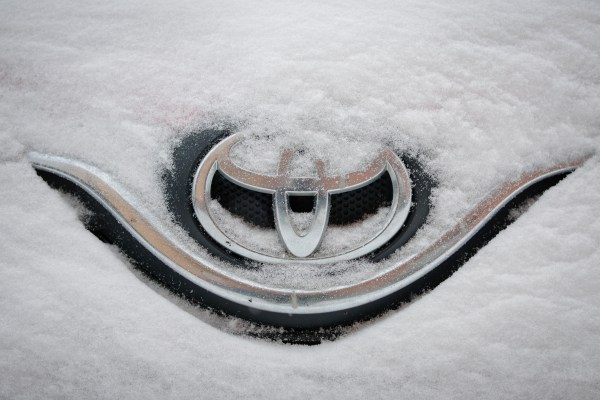Toyota president Akio Toyoda has made it no secret that he really, really dislikes electric vehicles. This weekend, he offered this latest installment:
“People involved in the auto industry are largely a silent majority,” Toyoda told reporters in Thailand, according to The Wall Street Journal. “That silent majority is wondering whether EVs are really OK to have as a single option. But they think it’s the trend so they can’t speak out loudly.”
He might be right! I wouldn’t be surprised at all if a majority of automotive executives dislike EVs. After all, the legacy automotive industry dragged their feet on EVs. In instances where they had promising products, they left them to wither on the vine. In other cases, the products that rolled off the assembly line were clearly the bare minimum required to comply with the law. They’d probably prefer to keep making gas and diesel vehicles, and if those go away, at least have some alternative to batteries, which have become an industrywide headache as the supply chains experience growing pains.
Toyota’s electric intransigence might strike some as peculiar. The company pioneered the mass-market hybrid-electric powertrain, which debuted on the Prius and has proliferated throughout its lineup. From that, it’s almost certainly amassed decades of experience with electric motors, battery packs and battery management systems, which comprise the key components of an EV powertrain, too.
But though hybrids might have seemed like a significant breakthrough, they were not a radical shift for an industry that had grown accustomed to tweaking the internal combustion engine ad nauseam to make up for its deficiencies. Hybridization added electric motors to get the car rolling and assist at low speeds, where fossil-fuel engines are the least efficient; it did nothing to eliminate the internal combustion engine.
The ranks at every legacy automaker are filled with mechanical engineers, many of them experts at wringing extra tenths of a percent out of combustion engine technology. While they might be capable enough when it comes to designing electric powertrains, it is not their core competency. Shifting to EVs would put electrical engineers in the driver’s seat.
From that perspective, Toyota’s embrace of hybrid technology should be seen not as a stepping stone to an electric future but as yet another effort to prolong the reign of the internal combustion engine.
Now, while Toyoda might be trying to forestall the death of fossil fuels, he’s also trying to build industry support for hydrogen-powered cars and trucks. The Japanese government is in its corner; hydrogen has been a cornerstone of its energy policy since the energy crisis of the 1970s. The government invested large sums in developing solar, geothermal and hydrogen technologies with the goal of reducing its reliance on imported oil and coal (Japan has very little of either).
Japan’s first-mover status meant that it developed several successful hydrogen fuel cell projects, showcasing the technology’s promise. The only thing that came out of a fuel cell electric vehicle’s tailpipe was water, and refueling was about as fast as gas or diesel.
Following the Fukushima nuclear disaster in 2011, the government doubled down on hydrogen. By then, Toyota was ready. The company had been researching and developing automotive fuel cells for decades, and in 2014 it rolled out the Mirai, a fuel-cell vehicle that looked like a sci-fi interpretation of the bulbous Prius.
But for all its promise, the Mirai landed with a thud. Sales have been slow in Japan, and in the U.S., it’s only leased in California. Why California? The state has the most hydrogen filling stations, though that’s not saying much — there are only 62 throughout the entire state.
After nearly a decade of lackluster sales, hydrogen infrastructure remains anemic. Which might be why Toyota has decided to ramp up its investment in EVs.
That doesn’t mean Toyoda is happy about it. He’s no doubt intimately familiar with the amount of money his company has spent on hydrogen research and development, and I’m sure he’d like to recoup it.
While batteries have advanced rapidly, fuel cells haven’t been able to keep pace. The same pattern has played out in refueling infrastructure. Motor Trend recently took a Mirai on a road trip, and the hydrogen refueling experience makes EV charging sound like a piece of cake.
Still, experts remain bullish on hydrogen’s long-term prospects. By 2050, industrial uses will drive a surge in demand for hydrogen. That sort of spike could create efficiencies that lower the overall cost of production, making it attractive outside of heat-intensive industrial processes and long-haul shipping. In the latter half of the century, hydrogen might finally start to deliver on its promise.
Problem is, carbon emissions need to hit net-zero before then. Even the best hybrid still can’t match the efficiency of the worst EVs (Hummer excluded), and unlike EVs, hybrids will always be dependent on fossil fuels.
Toyoda’s problem isn’t one of perspective — it’s one of timing. The automotive industry might consist of a silent majority in support of EV alternatives, but market trends don’t seem to agree with their outlook. If they don’t come around, they could be in for a challenging future.
